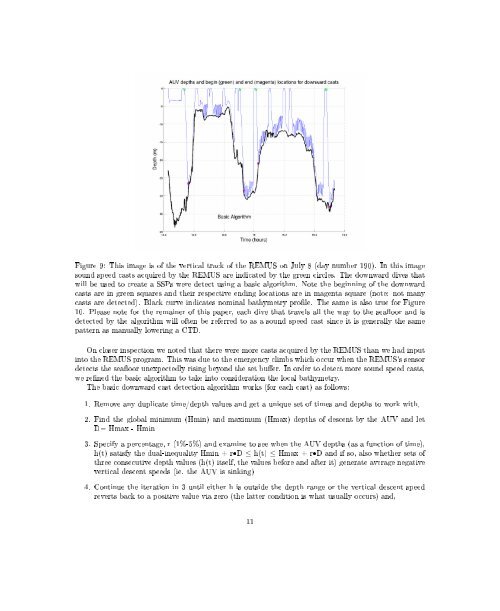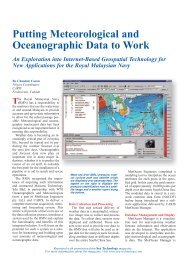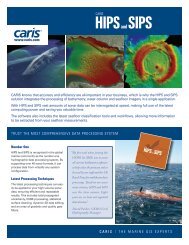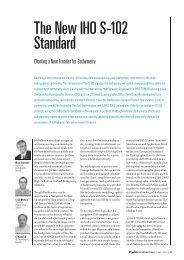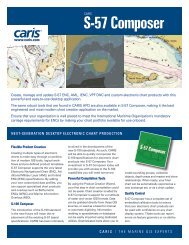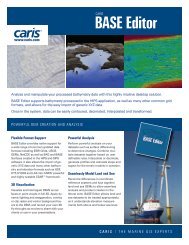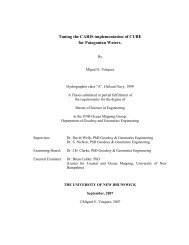You also want an ePaper? Increase the reach of your titles
YUMPU automatically turns print PDFs into web optimized ePapers that Google loves.
Figure 9: This image is of the vertical track of the REMUS on July 8 (day number 190). In this imagesound speed casts acquired by the REMUS are indicated by the green circles. The downward dives thatwill be used to create a SSPs were detect using a basic algorithm. Note the beginning of the downwardcasts are in green squares and their respective ending locations are in magenta square (note: not manycasts are detected). Black curve indicates nominal bathymetry prole. The same is also true for Figure10. Please note for the remainer of this paper, each dive that travels all the way to the seaoor and isdetected by the algorithm will often be referred to as a sound speed cast since it is generally the samepattern as manually lowering a CTD.On closer inspection we noted that there were more casts acquired by the REMUS than we had inputinto the REMUS program. This was due to the emergency climbs which occur when the REMUS's sensordetects the seaoor unexpectedly rising beyond the set buer. In order to detect more sound speed casts,we rened the basic algorithm to take into consideration the local bathymetry.The basic downward cast detection algorithm works (for each cast) as follows:1. Remove any duplicate time/depth values and get a unique set of times and depths to work with,2. Find the global minimum (Hmin) and maximum (Hmax) depths of descent by the AUV and letD= Hmax - Hmin3. Specify a percentage, r (1%-5%) and examine to see when the AUV depths (as a function of time),h(t) satisfy the dual-inequality Hmin + rˆD ≤ h(t) ≤ Hmax + rˆD and if so, also whether sets ofthree consecutive depth values (h(t) itself, the values before and after it) generate average negativevertical descent speeds (ie. the AUV is sinking)4. Continue the iteration in 3 until either h is outside the depth range or the vertical descent speedreverts back to a positive value via zero (the latter condition is what usually occurs) and,11


